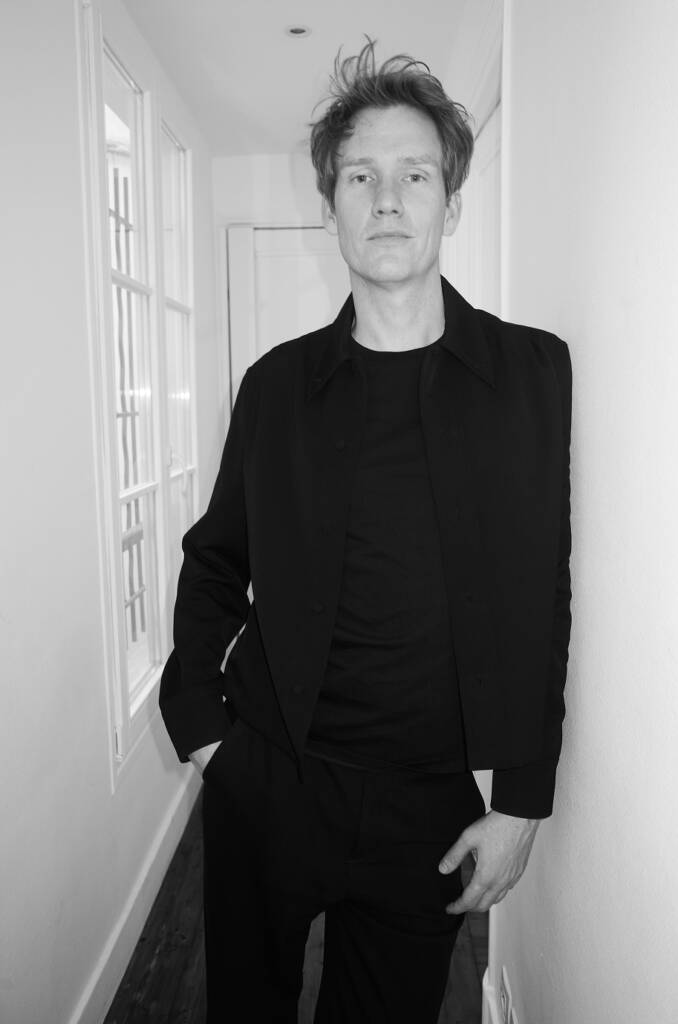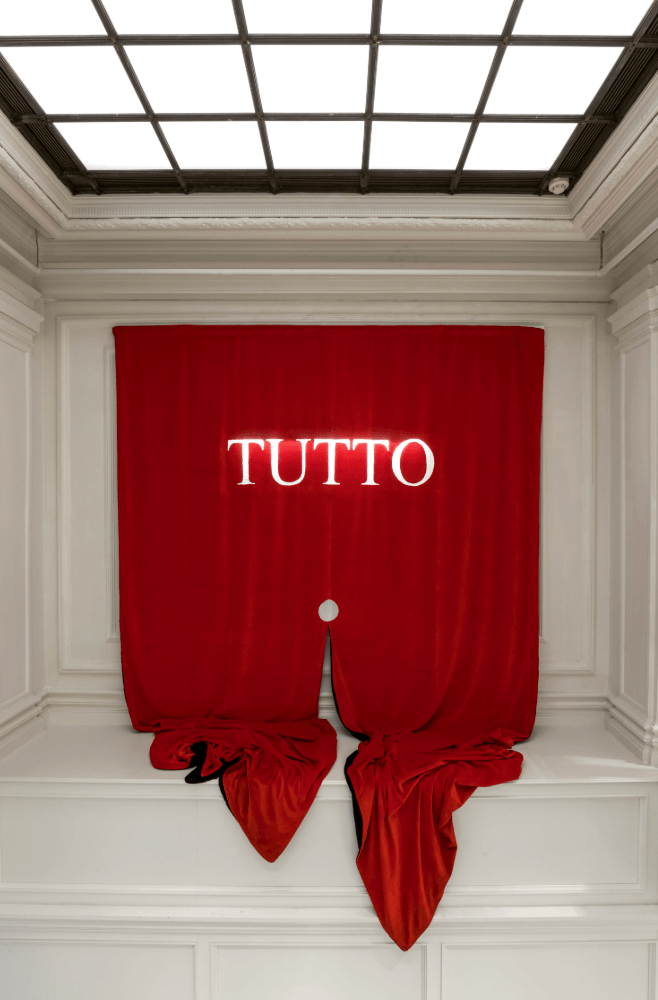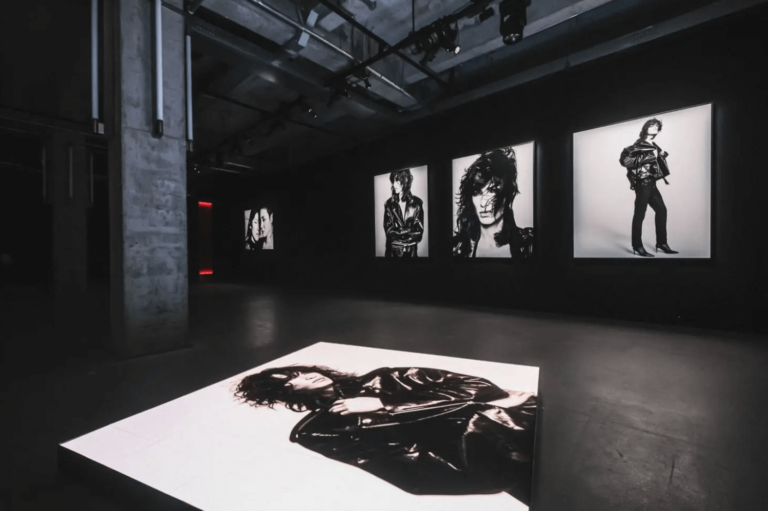

Tutto, 2019
Courtesy of MATILDE CASSANI, Milan, Photography courtesy of GUCCI
Truls Blaasmo sees curating as a way to spark dialogue. With a background that spans exhibitions, fashion collaborations, and immersive spatial storytelling, his work flows effortlessly across disciplines. Whether he’s shaping narratives for global brands like Gucci or creating exhibitions that feel more like emotional landscapes than static displays, Blaasmo approaches each project with a deep, intuitive sensitivity. In our conversation, he shares what it means to curate with emotion, why authenticity has never been more essential, and how the curator’s role is evolving into something profoundly human.
hube: What does the concept of “curatorship” mean to you today? In your opinion, how has the role of the curator evolved in the current cultural landscape?
Truls Blaasmo: To me, curatorship today means looking beyond the artwork itself, beyond the boundaries of an artist’s practice or their place in art history. It’s about positioning the work within a broader context: one that considers political undercurrents, environmental realities, and the spatial dynamics of where and how the work is presented.
The role of the curator has gone from being a caretaker of objects to becoming a cultural translator: someone who bridges disciplines, geographies, and audiences. Today, curating is as much about fostering dialogue and shaping experience as it is about selection and presentation.
h: To what extent is your curatorial work driven by emotional resonance versus conceptual clarity?
TB: While I always consider the broader conceptual and contextual framework of a work, my curatorial decisions are primarily driven by emotion. I’m drawn to how a piece speaks on a visceral level—whether to the audience, the client, or the emotional architecture within the artist’s practice itself.
Emotional impact is, for me, what gives a work lasting presence. It’s often the spark that guides how I build narratives or spatial relationships within an exhibition. Conceptual clarity matters, but it’s the emotional undercurrent that makes the curatorial gesture meaningful and memorable.
h: What’s your perspective on the increasing role of brands as contemporary art patrons? Do you see it as a meaningful cultural shift or a strategic extension of branding?
TB: It’s not always easy to define whether the rise of brand involvement in contemporary art is a genuine cultural shift or a strategic branding movement, often, in my experience it’s a bit of both depending of the size of the brand. What I’ve observed through ongoing dialogue with various brands is that each approaches this engagement differently, shaped by their internal culture, values, and creative directors personal approach.
Some brands view their involvement in the art world as a way to support cultural dialogue and experimentation, while others integrate it more as part of their image strategy. In many cases, it’s the vision of the creative director that drives how deeply and authentically the brand aligns with the art ecosystem. The results can be remarkably diverse—from sincere patronage to more calculated collaborations.
h: Where do you see fashion’s place within the broader cultural landscape?
TB: Fashion today occupies a much broader cultural role than simply producing garments—it has become a vehicle of emotional engagement. Especially in the wake of Covid, we’ve seen a shift: luxury brands now have to work harder to build consumer loyalty especially towards their VIC that goes beyond the product itself. It’s no longer just about what you wear—it’s about the cultural capital a brand represents.
In that sense, fashion is increasingly about creating a complete brand world—one that people can aspire to, relate to, and feel part of. Art plays a role in this evolution, acting as an experiential bridge that helps brands foster emotional connections at physical touch points, such as exhibitions, installations, or retail spaces.

